#filing this under the tag
Explore tagged Tumblr posts
Text
I am once more thinking about Eirene and the significance of her name and how I've always found it a little bit strange that the first thing that will pop up in any searches is the association to the Greek goddess of Peace, Eirene - mostly because PtN Eirene doesn't come across as a pacifist. There is also a nice thread on the PtN reddit from some time ago where some guesses for the names of several characters were ventured and although some appear more obvious (NOX, Langley, Kelvin), the only mention there for Eirene is a former empress of the Byzantine empire.
And while I am 100% in favor of queenly aesthetics for Eirene (given the chessboard motifs, Quinn, etc), I never really liked this rather obscure association (I doubt 'empress Eirene' is the first empress or female monarch that comes to anyone's mind these days). As a result, I went back to the Greek mythology and thought it interesting that one of the few surviving statues of Eirene is a Roman copy, which depicts Eirene holding an infant Plutus - the Greek good for wealth. Now - this is more interesting; Eirene is the dominating figure of the Greed libram, and it's what drives her.
That statue is considered to be an allegory for 'Plenty' - in other words, 'Plutus' prospering under 'Peace'; frankly, this makes a lot more sense: while it's true that during wartime there is a financial gain for some enterprises, usually this leads to significant strife for the economy of a country and increased debt to finance war efforts. From a purely business, broader economic perspective - peace is actually more profitable.
And while Eirene (as a character) seems to not be afraid to 'get her hands dirty' (her own beginning battle quote) to achieve what she must for Quinn, she didn't resort to war to get to where she is; in fact, Eirene's wealth accumulates from sensible business choices, trade channels, political connections... Eirene's empire is built on peace (or the illusion of it) rather than all-out war. And then, one last element for consideration made me realize this is actually a pretty damn good name.
Eirene's equivalent in Roman mythology is Pax - and the Roman Empire reached its golden age during the so-called Pax Romana, going as far as inspiring other similar periods in human history where one had domination over the world in terms of geographical reach, cultural matters, trade and so on. The Roman Empire prospered as it had never done so because peace (or what was deemed 'peace' at the time) allowed them to be the strongest they ever were.
In a way - this seems to be what Eirene is doing; she is not seeking to go to war against any government agencies (at least not on the outside). Eirene is effectively establishing her own empire, going from DisCity to Outlands, controlling trade routes, having fingers in all sort of pies in DisCity in several different business segments and benefitting from 'civility' and 'order'.
Honestly - I have no idea if Eirene's name is supposed to be that deep and if Aisno went for all these connections when naming her; but now my mind has done these links, I feel much more at ease with her being named after the Greek goddess of peace.
#♔ ooc . taking a step back#♕ headcanons . everything is as I’ve planned#filing this under the tag#because I sincerely like the way it works#although this would probably make no sense in-game#considering how most of the world's history#seems to have been lost following the Perishing Star
4 notes
·
View notes
Text
submissive in the way a livestock guardian dog is submissive to the sheep it kills wolves for
#Does this make any sense. gay people in my phone please understand me#my posts#puppy sub#<- funniest tag i could think to file this under
145K notes
·
View notes
Text
Still not over the head of cardiology, who said she wouldn't formally diagnose me with dysautonomia because she didn't want me to think of myself as disabled.
As if good vibes and a can-do attitude can stabalize autonomic dysfunction.
#chronic health tag#ableism in our medical system???#it's more likely than you think#I still remember having to inform the ER doctor that the reason MCAS wasn't in my file#was because the head of allergy for the hospital he worked at#'didn't believe in it'#this was one week into the pandemic#and this man touched his face out of exasperation#and muttered something that might have been 'dense mother fucker' under his breathe#anyway#there should be a screening process for people who want to go into medicine#if you think the only disability is a bad attitude#you should be jettisoned from your course and directly into the sun
5K notes
·
View notes
Text


"i'm literally the priest's favorite sacrificial lamb because i am so docile and sweet and i hold very still when they put the rope around my neck and i trot along so happily while they lead me to the altar and they do not even have to tie me down because i lie so very still and only bleat once or twice in my lovely lamb voice and when the knife comes down it cuts through me like butter and i offer no resistance and i bleed so prettily all over my new white wool and my guts all unspool like the most beautiful shining yarn and my eyes are animal and dumb and hold no accusation and every time i die i come right back as another little lamb because the priest loves me so so much and he always chooses me for the sacrifice every time and he always places one hand on my small and twitching nose to calm me while he lifts the knife and he doesn't do it for the other lambs only me because i'm his favorite"
#anyway .#you may now throw me in the trash for this#this idea has been in my head for like a month and now we're here#very very close to how i wanted it in my head but i can't be bothered to try and do even one more revision lol#filing this one under art i wish i could have drawn when i was 15#dean winchester#spn#supernatural#spn fanart#dean#my art#charbies art tag#tw blood
1K notes
·
View notes
Text
EuroGamer: 'BioWare knew the deepest secrets of Dragon Age lore 20 years ago, and locked it away in an uber-plot doc'
Original creator David Gaider on how "some of the big mysteries are being solved".
Rest of post under a cut due to length and possible spoilers.
"As I write about the secrets hidden in Dragon Age's mysterious Fade, and as I uncover some of them playing Dragon Age: The Veilguard, one question keeps rising up in my mind. How much did BioWare know about future events when first developing the series more than 20 years ago? That's a long time, and back then BioWare didn't know there would be a second game, which is why Dragon Age: Origins has an elaborate and far-reaching epilogue. Why lay so much lore-track ahead of yourself if you don't think you'll ever get there? But look more closely at Origins and there are big clues suggesting BioWare did know about future Dragon Age events. There are obvious signs in the original game, such as establishing recurring themes like Old Gods and the Blight and Archdemons. But there's also Flemeth, Morrigan's witchy mother, who's intimately linked to events in the series now - more specifically: intimately linked to Solas. Does her existence mean Solas was known about back then too? There's only one person I can think of to answer this and it's David Gaider, the original creator of Dragon Age's world and lore. We've talked before, once in a podcast and once for a piece on the magic of fantasy maps, where we discussed the creation of Dragon Age's world. And much to my surprise, when I ask him what he and the BioWare team knew back then, he says they knew it all. "By the time we released Dragon Age: Origins, we were basically sure that it was one and done, but there was, back when we made the world, an overarching plan," he says. "The way I created the world was to seed plots in various parts of the world that could be part of a game, a single game, and then there was the overall uber-plot, which I didn't know for certain that we would ever get to but I had an understanding of how it all worked together. "A lot of that was in my head until we were starting Inquisition and the writers got a little bit impatient with my memory or lack thereof, so they pinned me down and dragged the uber-plot out of me. I'd talked about it, I'd hinted at it, but never really spelled out how it all connected, so they dragged it out of me, we put it into a master lore doc, the secret lore, which we had to hide from most of the team.""
"This uber-plot document was only viewable on a need-to-know basis, he says, and only around 20 people on the team had access to it - other senior writers mostly. And even though Gaider left the Dragon Age team after Inquisition, and then eight years ago BioWare altogether, meaning he didn't work on The Veilguard at all, he believes - by looking at the events in the new game - his uber-plot lore "has more or less held up". That's impressive. What's even more impressive, or exciting, is that back then he also envisaged a potential end state for the entire Dragon Age series - a point at which it would make no sense for the series to carry on. "I always had this dream of where it would all end, the very last plot," he says, "which I won't say because who knows, we could still end up there. But the idea that this uber-plot was this sort of biggest, finite... That the final thing you could do in this world that would break it was there as a 'maybe we would get to do that one day'... There was just the idea of certain big, world-shaking things that were seeded in that arc, some of which have already come to pass, like the return of Fen'Harel." You've read that correctly: the idea to have Fen'Harel, also known as the Dread Wolf, reappear, was seeded all the way back then, way before Inquisition - the game in which he does actually reappear. But the concept for Solas, as a character who was Fen'Harel in disguise, was a newer idea. "That spawned from a conversation I had with Patrick [Weekes] and a number of other writers," Gaider says, "as an idea of 'what if you had a villain that spent an entire game where he's actually in the party and you get to know him?' Now, the god version and his larger role in the plot, yes that was known, but not that he would be presented as a character named Solas." Fen'Harel being known about means the other elven gods were known about, which means all of that stuff Solas reveals about his godly siblings - that they're not gods at all but evil elven mages he locked away behind the Veil - was known about back then too. "Oh yeah," Gaider says. "Everything that Solas tells you [at the end of Inquisition DLC, Trespasser]: it's all part of that original uber-lore - that was all in our mind." But why have so much lore if you're not certain you'll get to ever realise it? Well, to create a believable illusion. By creating an "excess" of lore, as Gaider describes it, Origins made Thedas feel like an old and believable place. A place with history, rather than a Western set that was all facade and no substance."
"BioWare also did something canny with the lore it did relay then, too: it shared it through the voices of characters living in the world, making it inherently fallible. In doing this, Dragon Age veiled its truths behind biases. The church-like organisation of the Chantry proclaims one truth, while the elves and dwarves proclaim another. Sidenote: you can experience this yourself through different racial origin stories in Dragon Age: Origins. This way, there's no one, objective, irrefutable, truth. "To get the truth, you kind of have to pick between the lines," Gaider says. So even though elven legends are coming true through the existence of Solas and The Veilguard's antagonist gods, it doesn't mean that's the one and only truth. There's truth in what the Chantry teaches and what the dwarves say, he tells me, which ignites my curiosity intensely. BioWare has also been tricksy in how it's rubbed out the lore the further back in time you go. "In general, the further the history goes back, we always would purposefully obfuscate it more and more," Gaider says - "make it more biased and more untrue no matter who was talking, just so that the absolute truth was rarely knowable. I like that idea from a world standpoint, that the player always has to wonder and bring their own beliefs to it." It leads into a founding principle of Dragon Age, which is doubt - because without it, you can't have faith, a particularly important concept in the series. It's where the whole idea of the Chantry's Maker comes from and with it, the legend about the fabled Golden City - now the Black City - at the heart of the Fade. This is the very centre of the lore web, and, I imagine, it's close to the series endpoint Gaider imagined long ago. All secrets end there. Did Gaider know what was in the Black City when he laid down Origins' lore? That's the question - and it startles me how casually he answers this. "Oh, yeah," he says. "What was in the Black City: that's the uber-plot. I knew exactly. "Was it as detailed in the first draft of the world?" he goes on. "No. I had an idea of the early history because that's where I started making the world. So the things that were true early-early: I knew exactly what the Black City was and the idea of what the elves believed, and what humans believed vis-a-vis the Chantry - that was all settled on really early. Then I expanded the world and the uber-plot bubbled out of that.""
"Gaider shows me the original cosmology design document for Dragon Age: Origins as if to prove this - or rather for the game that would become DAO. The world was known as Peldea back then. I can't share this with you because I see it via a shared screen on a video call, and because Gaider doesn't want me to, mostly because the ideas are so old they're almost unrecognisable from what's in the series now. But I can tell you it's a document that's just over a page in length, and that there's a circular diagram at the top showing the world in the middle and the spirit realm ringed around it. And on that document is reference to the Chantry's beliefs about a God located in a citadel that can be found there. Gaider says BioWare knew about Fen'Harel (the Dread Wolf) 20 years ago when it was developing Dragon Age: Origins, and that he'd one day reappear. The Fade wasn't known as the Fade back then, either, but as the Dreaming, because it's the place people go when they dream - an idea that lives on still. And if that sounds familiar to any fans of The Sandman among you, it should. "I'd say The Sandman series was probably fairly prominently in my head," says Gaider. "I liked that amorphous geography that was born from the psyche of collective humanity. I'd say yes, if I was to point at something specifically, that's probably where the very first inspiration of it took root." It's a lot to take in, but it reinforces the admiration I have for Dragon Age. Just as I have when hearing about the creation of my other favourite fantasy worlds, such as A Song of Ice and Fire, I begin to understand the magnitude - and the deliberateness - of the plotting that went on. I wonder if one day the Dragon Age series will end in the way Gaider first imagined, albeit slightly altered by the many other pairs of hands shepherding it along now. What a curious feeling it must be to know, so many years in advance, where things might go. Where that end is, I don't know, but I do know we'll take a significant step towards it in The Veilguard. After all, we're coming into contact with gods who were there at the recorded beginning of it all. "Yeah - we have access to people who can tell us the truth from first-hand experience," Gaider says, "although again, it depends on what the writers did with it. But if they continued the tradition of Dragon Age, you never know for sure if Solas is telling you everything, or what you're learning is the entire truth. "But yes, some of the big mysteries are being solved. I mean, will they one day definitively tell you about the Maker? Will we crack the big mysteries of the world and just make them answered finally? And does that ruin one of the central precepts that Dragon Age is founded upon? Maybe," he says. "Ultimately, that lore, when you make it big and you hint at it and hint at it and hint at it, it becomes a Chekhov's Gun of sorts. Eventually you got to pony up.""
[source]
#dragon age: the veilguard#dragon age the veilguard spoilers#dragon age: dreadwolf#dragon age 4#the dread wolf rises#da4#dragon age#morrigan#queen of my heart#bioware#video games#long post#longpost#solas#dragon age 5#(note: i just want a tag to start filing things under which are about the possible future thats all ^^)
908 notes
·
View notes
Text
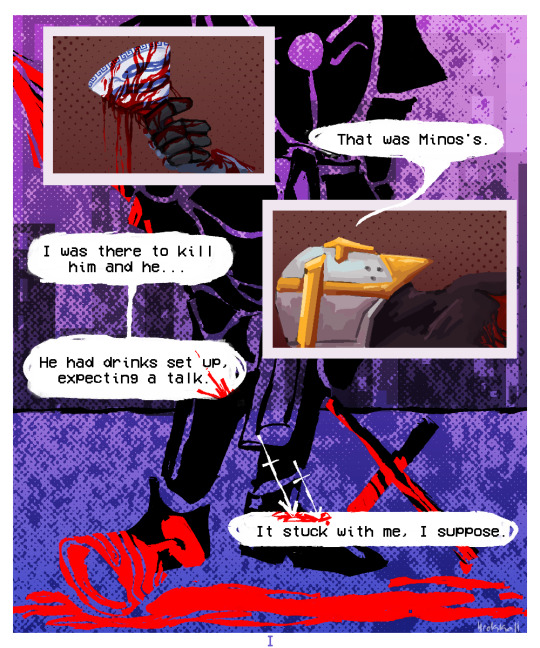
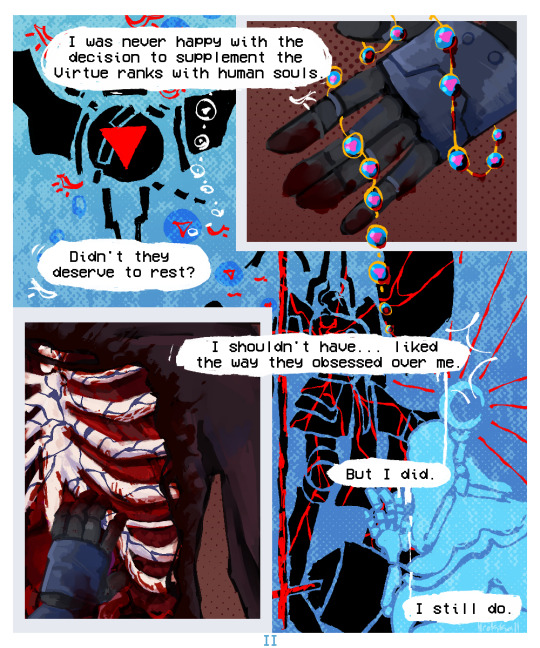

DIVINE AUTOPSY
Text from a post by @bedrock-to-buildheight about angel anatomy and the physical manifestations of regret that can only be purged in a bloody vivisection.
#Ultrakill#V1 Ultrakill#Gabriel Ultrakill#Gabv1el#<- Sorry if you find this in the tag but also is it really an Ultrakill ship(ish) piece without gratuitous viscera#Okay. Now time for every content warning under the sun so I don't accidentally flashbang anyone with this:#Cw gore#Cw blood#Tw gore#Tw blood#Gore#Blood#Hopefully one of those works. If not I am so damn sorry.#Anyway I've been working on this on-and-off for months; if you could spare a glance that would be much appreciated#ALSO yes I know this wouldn't be an autopsy because he's still alive. I know. I just like the words + that's the file name. 👍 peace & love#Hrokkall art#1k#Comic
2K notes
·
View notes
Text
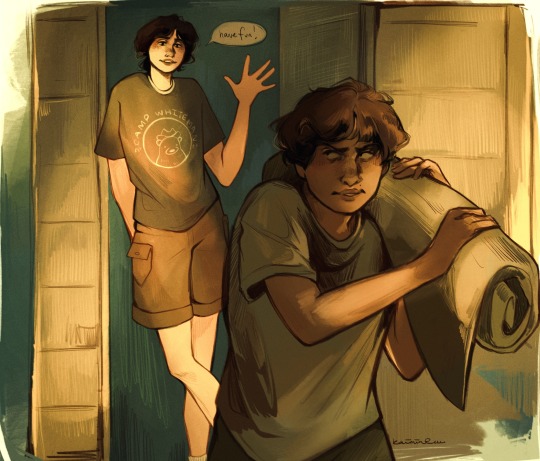
"when you slam the door i think you know, that you won't be away too long, you know that i'm not that strong"
hi @campbyler you destroyed me
#byler#acswy#filed under events that make me know i'm living in the right timeline#i love you guys#also i'm really connecting over your use of mamma mia#MAMMA MIA! it's a game we play SHUT UP#bye bye doesn't mean forever SHUT UP!!!!!!!!!#i genuinely fear the possibility of winner takes it all being in future chaps#abbyler#<- thank you tumblr user genius demobatman for this genius tag#camp byler#byler fanart#mike wheeler#will byers#stranger things#my art
1K notes
·
View notes
Text
Mikey Goes To Oz

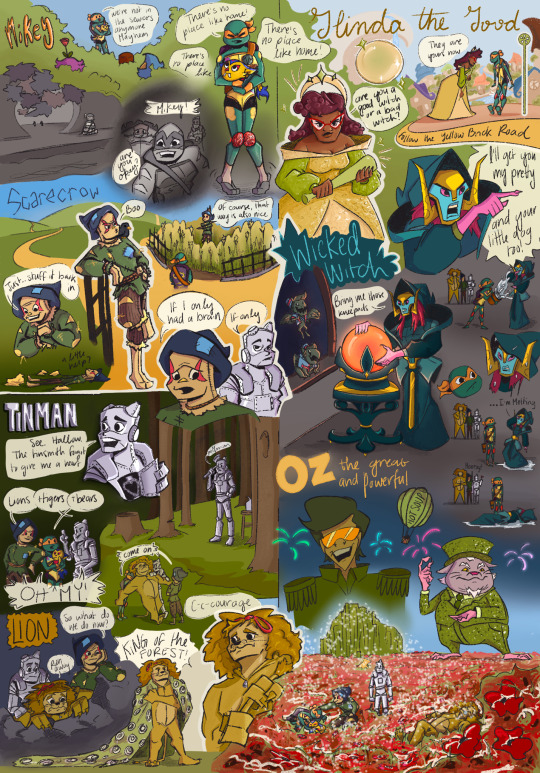
<Time spent: 49 hours 17 minutes>
When Mikey takes some time away from a loud family squabble he accidentally ends up getting “flushed” down the sewers. This winds up sending him to the colorful land of Oz where he meets a good witch, a wicked witch, a brainless scarecrow, a heartless Tinman, a cowardess lion, and a powerful wizard, all disguised behind very familiar faces.
A canon adjacent spin off set before the season one finale but after they discover Splinter is Lou Jitsu
I wanted to fit each of the boys into their “you’ve had this all along” category. Leo isn’t brainless, in fact he’s pretty clever with a street smart, people reading ability on par with Donnie’s intelligence. Donnie isn’t heartless, he just has a tough time expressing his feelings. They are complex and unalgorithic but he can get just as excited or sad or angry as anyone, as much as he may deny it. Raph isn’t a coward, but being brave sometimes means admitting you’re scared and that you maybe don’t have all the answers. You dont have to be strong all the time and you don’t have to do it by yourself.
In the movie Dorothy’s journey home is also a representation of her running away. The important thing was to remember there were people who cared about her. Mikey is experiencing a similar phenomenon, wanting the escape the bad vibes in the lair. His “you’ve had it all along” is interesting because it is an object, since the Ruby kneepads could’ve taken him home the whole time. And sometimes getting home means going on a journey only to realize you never left.
I put April as Glinda because Glinda appears as a defender of the weak, and I see April in a similar light. Always willing to help and beat someone up if it is so required. Splinter as The Wizard of Oz represents Splinters own willingness to hide behind different personas, his running from the past and the pulling back of the curtain for Mikey in timeline. The Wizard grows through the movie, albeit quickly, and ends up leaving Oz to go home leaving his legacy with the scarecrow, the Tinman, and the lion. In this case the passing of the baton to his sons.
Meanwhile Draxum as the wicked witch felt much more how Mikey sees Draxum at this time in the show, mostly just an antagonistic force who wants something from them. Fun fact: I imagine throughout this dream, Draxum is uninterested in being the wicked witch but is pressed into it via plot. Hence his disinterest in being “melted.”
Additional characters not pictured: Big Mama as the Wicked Witch of the East (those were her Ruby kneepads!!) and Todd as the Mayor of Munchkin Land. If you can think of more, feel free to leave them in the comments or tags.
#rottmnt#wabbystuffpost#Mikey goes to Oz#I’ve had this in my WIP file for far too long#I got a little lazy with the rendering#especially for the first piece#I may update it later but for now it’s going out like this#let’s just say it’s rise style#rise of the teenage mutant ninja turtles#leonardo#donatello#raphael#michelangelo#april oneil#baron draxum#Hugnin and Munnin#splinter#Lou Jitsu#wizard of Oz#my art#wabbyart#questions are always welcome#close ups of specific things are under the Mikey goes to Oz tag#tmnt#please don’t flop#additionally Leo doesn’t have as many bones so he’s tripping or supported on almost every page#Dorothy tells off the Lion in the movie as the Scarecrow and Tinman cower and I imagine that’s a very funny scene in this AU#I also think Mikey keeps mixing everybody up with their irl people#if you haven’t seen the movie in a while I recommend watching it again cause some scenes may be funnier with this context
313 notes
·
View notes
Text

SO HEED THE STARS, THEIR LIGHT WILL LEAVE US IN THE DARK
#ace attorney#aa5#ace attorney dual destinies#athena cykes#simon blackquill#aa the phantom#metis cykes#eye strain#ask to tag#indys art#had to crunch this one to get it under the file limit :(#whATEVER it still looks fine im not mad <- lying#N e ways Ive been wanting to do something like this for a WHILE now#like#ever since I finished watching dd length of time#not sure why Im just now getting around to it but! better late than never#anyways enjoy! <3#lots of athena lately huh
1K notes
·
View notes
Text

brush test slash rendering practice with ayem
#morrowind#almalexia#the elder scrolls#tes#tes fanart#art#id in alt#ok that's all the tags this needs ANYWAY#i started this 1. for experimenting with coloring from dark to light#2. because i wanted to draw someone kind of back turned to the camera#3. rendering practice for hair particularly#4. to go from sketch to rendering rather than doing lines to see if that doesn't smooth out my workflow a bit#5. because i've never actually used this brush past flat coloring#and out of those 1. i don't think i had enough of an idea of the palette or process to jump into dark to light painting so i did scrap that#and go with my usual “flat color with one of the mid shadow tones add shadows add light”#i do think that painting from shadows out is a thing people do digitally i just think this wasn't the drawing to test it on for me#i think i'd need to look at some other peoples processes and start with a more fleshed out idea of where to go#2 and 3 i think worked out. i'm gradually figuring hair out which i think is sick#4 i also think worked out for me which is also sick because i do get caught on lines a lot. they're fun sometimes but i think some drawings#benefit better from not having them and that it might be a bit faster#and of course everything i do is so that i can draw slightly faster and better for next artfight#as for 5. i have mixed feelings on this brush but that might be because i hate change. and also because i started this drawing on the 15th#of november and finished it yesterday. so im kind of just sick of working on and looking at it#it was a valuable learning experience and i think it came out well! i am also going to drop to my knees and rejoice when i can finally#close this file out and free medibang paint from under it so i can work on Literally Anything Else#thank you almalexia for being my test subject i should've used a reference for your armor when i did the sketch but i didn't#maybe the crown looks weird because of it maybe it doesn't. not my problem anymore i can draw other elves again#my art#iiii think i forgot a my art tag last time
107 notes
·
View notes
Text


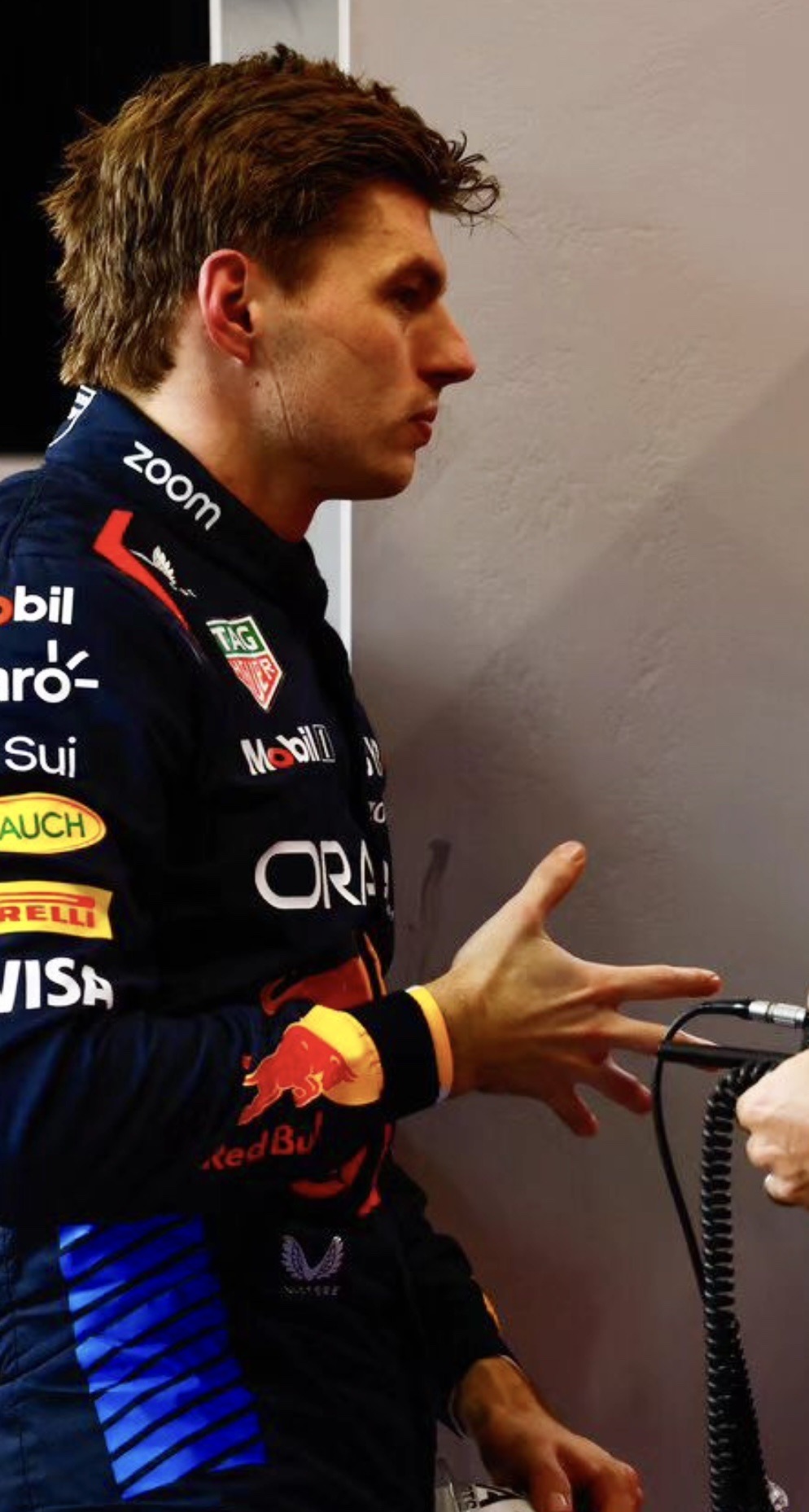


just a few Max moments ❤️ | 📸 x x
#max verstappen#autumn posts#filing under things that are just new to me#nothing new but I simply must yell somewhere#he is so BREATHTAKINGLY gorgeous my gosh#thank you F1 news sites for using the location tags I was browsing on insta hehe ahhhhhhhhh#his hands 😵💫✨#some quick swooning and then I gotta run!!! my friends and I are going to the art museum then jogging in the park yay!!!#hope everyone is well and having a Saturday with lots of moments of comfort and joy and rest 🌅✨
106 notes
·
View notes
Text
The Dedue scarf (or more of a wrap really) I've been screaming all the way through knitting is done!!!




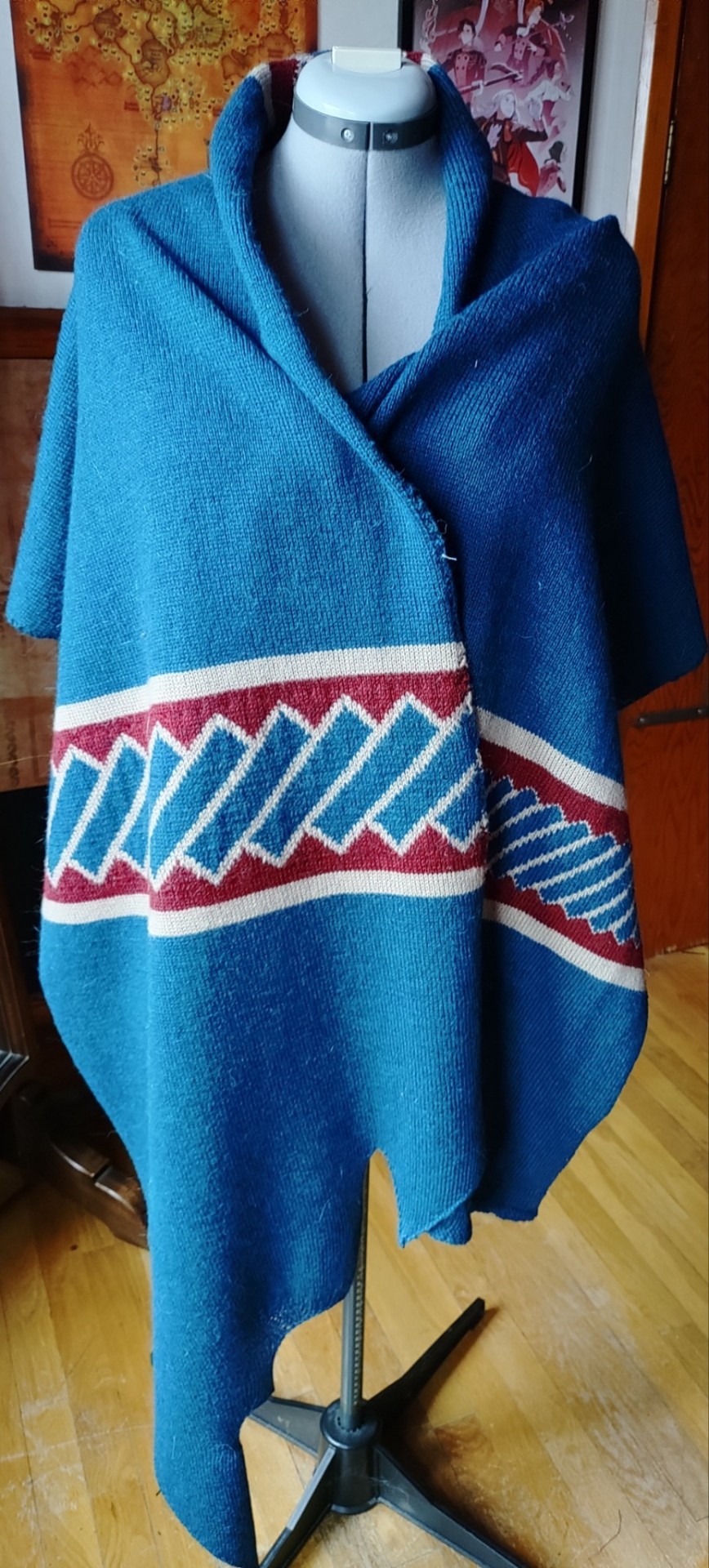
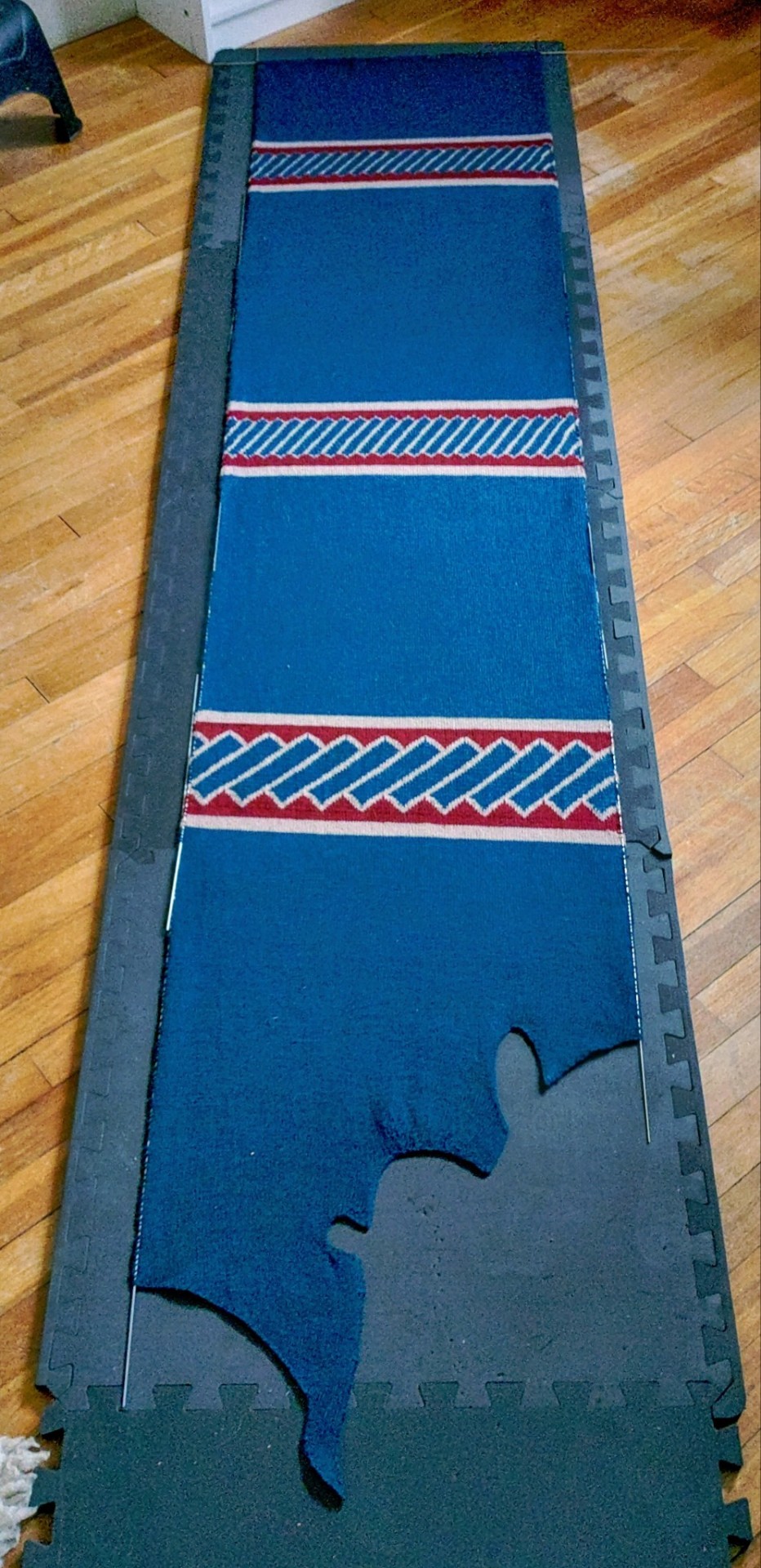
Final dimensions are about 8 ft long by 22 inches wide, and about 14.6 oz dry. I used 7.25 balls of Knit Picks Palette fingering yarn (50g, 100% Peruvian highland wool) in Marine Heather, one ball in Almond, and about half a ball of the same yarn in Garnet Heather. The smaller motifs are your standard 3 yarn Fair Isle knitting and the larger is 3 color ladderback jacquard at the suggestion of @themikecollective .
(Credits: shout-out to @eaglehorn for floating me their chart for the pattern as a starting point (I did my own chart for the smaller scale motifs but used their chart as the starting point and for the larger scale motif) and also shout-out to @themikecollective and @ehyde for suggestions on how to manage the floats on the larger motif. The medal (for display purposes) was purchased from @gizmoforge .)
I'm now going to snuggle in and be toasty warm for the rest of the winter.
#dedue molinaro#fe3h#fire emblem three houses#adventures in fibercraft#my cosplay#not really but filing it under that tag for organizational purposes
357 notes
·
View notes
Note

Bug and uncle Luke vibes

Jim and Cub vibes 🤭🤭
so true bestie. uncle lukey is such a kid at heart so he indulges bug's every whim. he's also that guy who just naturally migrates towards kids at parties and family events engaged in their silly conversations and games. in another lifetime he would've been a teacher <3
and there is nothing more cub-coded than this 😭😭😭😭 you and quinn thought it’d be a peaceful trip to the shops, leave the kids with their grandparents. what could go wrong? well...
Now, let’s be clear — Cub isn’t a naughty child. He’s the sweetest little guy you could imagine, polite, kind, always eager to help, and absolutely full of curiosity. It’s just that his energy knows no limits, and his curiosity is boundless. He’s not misbehaving, not trying to cause trouble. He’s just... exploring. He needs to touch everything, try everything, see how it works.
So when he stumbled across Bug’s paint set, well, it was only a matter of time before chaos unfolded. He’d been so into it, dabbing his little fingers into the colours, blending them together, and just having the best time — so lost in the textures of the paint — that it never occurred to him that maybe he should stop.
And Jim, having only been gone for a second, thought Cub was fine, sitting a few feet away. But when he looks down and sees his grandson sitting on the living room floor, absolutely covered in blue paint, there’s a flicker of mortification across his face before he laughs.
He’s raised three boys — equally rambunctious, equally curious — and honestly, this isn’t half as bad as the antics he dealt with when they were this small. So, even though Cub looks like a tiny, paint-covered disaster, Jim can’t help but love it.
Cub, of course, is smiling up at Jim, not even noticing the paint all over his little body, grinning ear to ear, completely content with his artistic endeavours. He has no idea why his grandpa is laughing, but he’s happy to join in anyway, his little giggle filling the air.
Jim, still laughing and shaking his head in disbelief, picks Cubby up, paint smearing all over his shirt, and carries him toward the dining room to find Ellen. She’s sitting at the table, watching Bug quietly draw, completely absorbed in her own art but the moment she looks up and sees Jim, with Cub in his arms, both of them covered in paint, even she bursts into laughter.
Jim, still chuckling, shakes his head. “I looked away for two seconds,” he says through his laughter, holding Cub up as if the mess wasn’t already obvious.
Ellen just laughs again, pulling out her phone in one smooth motion and snapping a picture before sending it off to you and Quinn with the caption: Grandpa was supposed to be supervising... maybe he just likes blue?
Jim looks at the picture Ellen just snapped, shaking his head with a grin tugging at the corners of his mouth. He glances down at Cub, who’s still grinning cheekily, completely unfazed by the mess of blue paint covering him from head to toe.
“Is that right, Cubby? You like the colour blue?” Jim asks, his tone playful, his eyes twinkling with amusement.
Cub nods enthusiastically, his little smile so wide it practically lights up the room.
“Uh-huh!” he says, his hands still sticky with paint as he tries to wipe them on Jim’s already-ruined shirt.
Jim chuckles and shifts Cub in his arms.
“Maybe you’re just getting ready to suit up for the Canucks one day, like your dad.” He pauses, glancing at Ellen with a smirk. “Though Quinn is gonna say I’m just trying to turn this into a team bonding exercise.”
Ellen laughs, her phone buzzing in her hand. She looks down at the screen, and as soon as she reads Quinn’s reply, she bursts out laughing again.
“What is it?” Jim asks, still bouncing Cub slightly, trying to keep him entertained.
Ellen holds up the phone, Quinn’s reply in bold letters: Tell Jimmy he’s out of practice. Can't handle one toddler?
#PLSSSS they'd be the cutest grandparents ever i'm-#also this is so stinking cute that you see pictures and think of my lil dad!quinn family!!!!! love u so much <3#idk i feel like i need a little au tag for these guys but for now let's just file this under#dad!quinn#capquinnchats#edit to add:#capquinn: the hughes au
55 notes
·
View notes
Text
Being me, I was thinking about Quinlan again this morning, specifically his sense of humor and how he expresses it. He's definitely playful (Obi-Wan even thinks of him that way in Dark Disciple) and he's also got a sharply funny, dry, sarcastic sense of humor that you see A LOT in the comics (and actually in the TCW ep, as well). That sense of humor is actually something I think he and Obi-Wan have in common! I think they share a pretty similar taste in humor and express themselves similarly via teasing and intelligent snark. They speak differently (Obi-Wan is more formal, Quin is more casual) but they enjoy the same kinds of jokes. You can even see it in the way they talk to each other sometimes in that bantery way that is the affectionate bickering of two people who know each other so, so well. I just really love the ways in which they play off each other. Quin can be more impulsive than Obi-Wan, but Obi-Wan also has his own controlled chaos, which just makes their dynamic all the more fun.
#Another post filed under Quin is not stupid actually#Just thinking about the new comic where Cad Bane is like I was hoping for Kenobi and Quin is like yeah I get that lot LMAO#Sends me#Quinlan Vos#Obi-Wan Kenobi#QuinObi#Star Wars tag#KCrabb rambles
76 notes
·
View notes
Text

I wrote the sentence "All Scott can think of is that skinny kid with the scraped knees arriving home from summer spacecamp, his noodle arms full of freebies and one baby tooth missing from his megawatt grin." in a fic this morning anD
Jeff has this in his wallet
#John Tracy#Thunderbirds Are Go#Thundebirds 2015#the baBY BOY#lenleg's thunderbirds tag#as a side note the fic i'm writing is John getting his ass kidnapped#we shall see if it ever sees the light of day#I should file this under: things that have been in my drafts folder for 8757528329395 years#do i remember how to draw? barely#yes thats alans face shape i figure john looked more him when he was younger and then ended up a pointy chin lad#lenleg's sketchbook
121 notes
·
View notes
Text
youtube
Mark Darrah video: 'Dragon Age: The Veilguard Has Shipped. Now What?? #/masseffect'
Video description:
"Dragon Age: The Veilguard has shipped. What happens at BioWare now? BioWare structurally finds itself in uncharted territory as it only has a single Project (Mass Effect) active. Chapters: 0:00 Veilguard is out, now what? 0:22 BioWare Structure and History 1:57 Growth 4:45 Consumption 6:28 Sustain 7:27 Contraction 11:14 Leadership Discontinuity 1 12:48 Leadership Discontinuity 2 14:14 One Project At A Time 16:33 Mass Effect 18:50 Will The People Be There? 22:18 FOCUS"
[source]
Key notes from the vid and the comments underneath:
"Up front I should say that I have every confidence that Mass Effect [5] is in fact being worked on and that that project is going to receive all of the support from EA that it might need."
Slowly and painfully BioWare is figuring out that it simply can't do more than one project at a time anymore. It's now a single-project studio. Mark Darrah expects that both Edmonton and Austin will be working on ME5 together
ME5 effectively paused production for 15 months in order to help DA:TV ship
Right now other than some DA:TV clean up/final patches, everyone at BW is working on ME5
However ME5 isn't yet ready to suddenly have a team of 250-300 people working on it, so while some DA:TV devs moved onto it, some DA:TV devs were moved to/are moving to other parts of EA instead. The ME5 team started, but there is a long way between "start" and "ready to scale" up
The ME5 team is figuring out what ME5 is going to be & its structure, then will get ready to ramp up to a much bigger team size
"BW, for the first time really ever, is able to singularly focus on a single project, is able to put everything it has towards a single goal, which is making the best ME it possibly can."
But it remains to be seen whether BW will be able to get its people back when it needs them and is ready for them. There are a few reasons why this might prove difficult. Alternatively, on the flipside, this degree of focus might be exactly what BW needs to move it into the next phase of its life. "Maybe EA is going to prove to be incredibly effective at moving people around and when ME5 looks to start to grow maybe there will be no troubles".
We will probably have hints of what's going on [with ME5] within the next two years. "I have high hopes for ME. I think that once they figure out staffing, BW being focused on one game at a time is probably great for the studio" (though there may be growing pains to get there)
Does Mark Darrah foresee similar issues in the ME5 dev cycle to what DA:TV had? No, because ME5 hasn't had the same two big directional shifts, and it has had no leadership discontinuity (ME5 paused when they went to help DA:TV i.e. it didn't continue without a leader). But we should only really start counting ME5's dev cycle from today. "It really hasn't been that long with a significant team"
The ME5 teases in recent N7 Days were made by a "very small team"
There are still lots of veterans at BW
Mark Darrah doesn't expect to be involved in what BW makes next
More under cut due to length.
BW has existed in different ways/structures through its history. We're currently entering into an "unprecedented time" for BW
The purchase of BW by Elevation Partners, the purchase of BW by EA, when Ray Muzyka & Greg Zeschuk left BW, and the year 2017 in general are the 4 most important events (not including shipping games) that Mark Darrah feels have affected BW the most in its history
BW's strategy over time could be seen as having had 4 different phases: grow, consume, sustain, contract. In the contract phase, though BW maybe didn't realize it yet, the number of projects it was capable of running simultaneously was decreasing slowly/gradually. Why? Projects were getting more expensive, requiring more people/resources/time, and by this point BW had essentially burned off all its 'reserves' from the growth phase i.e. there was no longer any fat left to burn off
After DA:I shipped, Mark Darrah experienced that it was very difficult to find resources if your project wasn't the next project that was due out the door
DLC is a safety valve for processes and staff; a place for devs to work when other projects aren't quite ready for them yet; a place for the next gen of leaders to be grown. These things disappear as DLC does. Mark Darrah is pretty sure that the move away from DLC is coming from EA
In the contract phase, in 2013-14 Anthem was starved out by DA & ME:A. ME:A was also somewhat starved out by DA. Then when ME:A was in the driver's seat, it consumed most of the resources
In late 2016/early 2017 during the push to ship ME:A, as part of that BW began to experience leadership discontinuity. As the DA leader, Mark Darrah led a team of DA people onto ME:A to help it ship (the Dragon Age Finaling Team) for a few months. this sort of thing had happened at BW before but this was the first time when senior leadership moved off the projects they led to do this. this caused a change in philosophy in terms of the way that projects were run
When ME:A shipped and Casey Hudson came back to lead BW, there was then a much much larger leadership discontinuity with Anthem. The Montreal studio was supposed to move over onto Joplin to help kickstart it but it ended up getting taken away and given to the leadership in Montreal. but even if this had happened as it was supposed to, BW may not have been able to be in a place where it was going to be able to ship Anthem and Joplin simultaneously
Three quarters of the senior leadership on Joplin moved to Anthem or left BW. DA continued and became Morrison. The discontinuity had massive consequences for DA4
In 2021/22, this happened again in the opposite direction. The leadership team moved onto DA to help it ship, though rather than leaving some of the team in place, everyone moved. The other project (next Mass Effect) effectively ceased to exist for 15 months in order to help DA4 ship. In 2023 for the first time since 1995 BW was only working on 1 project (DA:TV) & there was nobody working on ME5 or remasters or side projects at that time. Now that DA:TV has shipped, apart from some people on cleanup and final patches, there is no plans for DA:TV DLC and "there is only Mass Effect". "Everyone at BW will be working on Mass Effect."
DA:TV being a 'direct sequel' would have been an unlikely path
With BW now focusing on a single project, Mark Darrah does worry that EA will get "itchy"
It'll be a [long] while to DA5 [hypothetically speaking, if it gets made]
MELE involved a lot of external devs
Shadow Realms was BioWare Austin and was due to: "partially places for people, partially a desire for Austin to get something new."
Mark Darrah expects that the devs are hearing everything being said about DA:TV
BW focuses more on consoles because of sales numbers
Unreal Engine 5 (which ME5 is on) is moving onto other EA projects as well, which may help
There are reasons why DA:TV is the way it is
BW has had external consultants on leadership and structure over the years
Mark Darrah expects that the next Dragon Age will once again be pretty different to the last iteration
BW Austin were brought in to help make Anthem. "What didn't happen (that should have) is that they should have had more directional control over the live service direction."
BW has had difficulty learning from previous games because at least one title was too far along TO learn. but a single game leads to staffing issues
Mark Darrah pitched a dev structure back in 2016/17 which would have had "3 fast follow games then a period of retooling"
EA doesn't really sell IPs
Chance of DA:TV DLC? "That's an EA question. And I expect EA's answer to be no". "I don't think we will see DLC. A new DA would be in the future."
"DA has been looking for larger audiences in every iteration. EA has never understood the franchise"
Remake DA:O or ME1? "While I think it would do well, I don't expect it to happen at any time soon. Also the skillsets required don't really over lap"
"The 3 previous games DAVe was are leaking through in places"


Diagram from the video which shows the flow of people throughout BW's history, made by a member of Mark Darrah's community.
[source]
#dragon age 5#(this tag is hypothetical rn ofc. i just need a way/place to file stuff under about the topic. pls dont read too much into the tag ^^)#dragon age: the veilguard#dragon age: dreadwolf#dragon age 4#the dread wolf rises#da4#dragon age#bioware#mass effect#mass effect 5#video games#sw:tor#anthem#jade empire#mass effect: andromeda#long post#longpost
160 notes
·
View notes